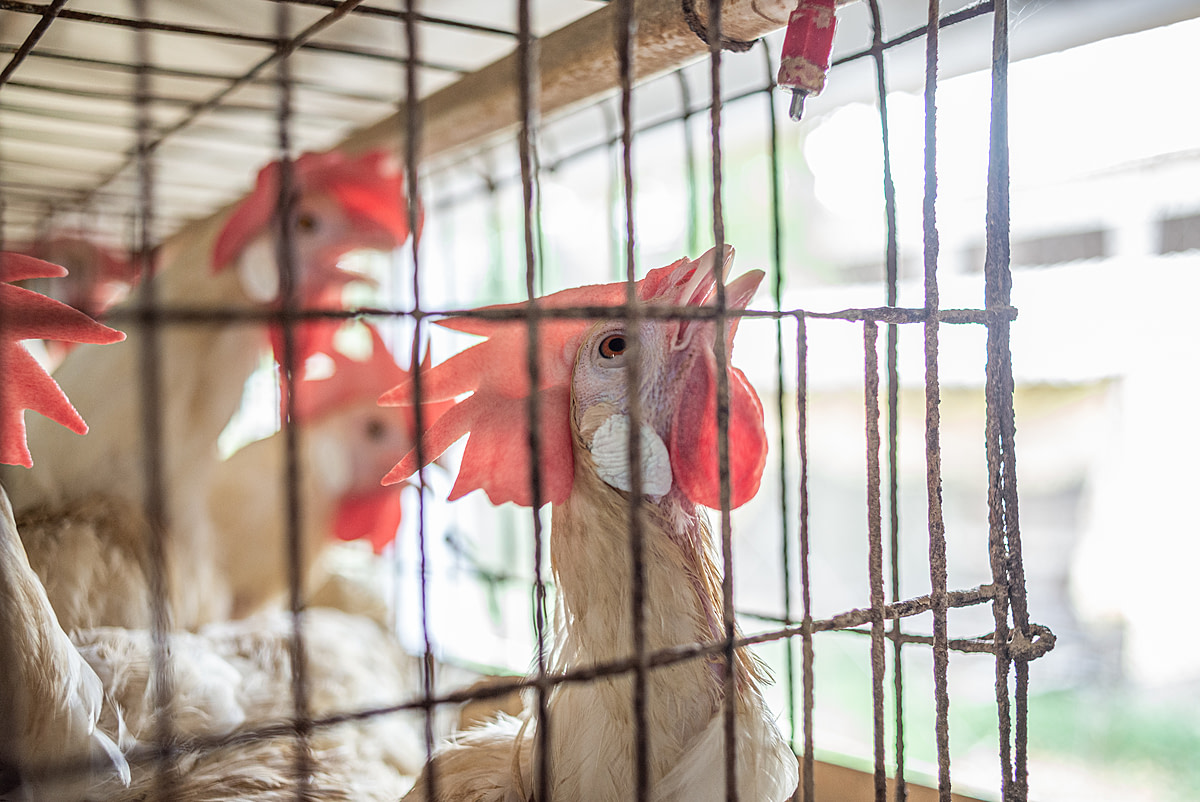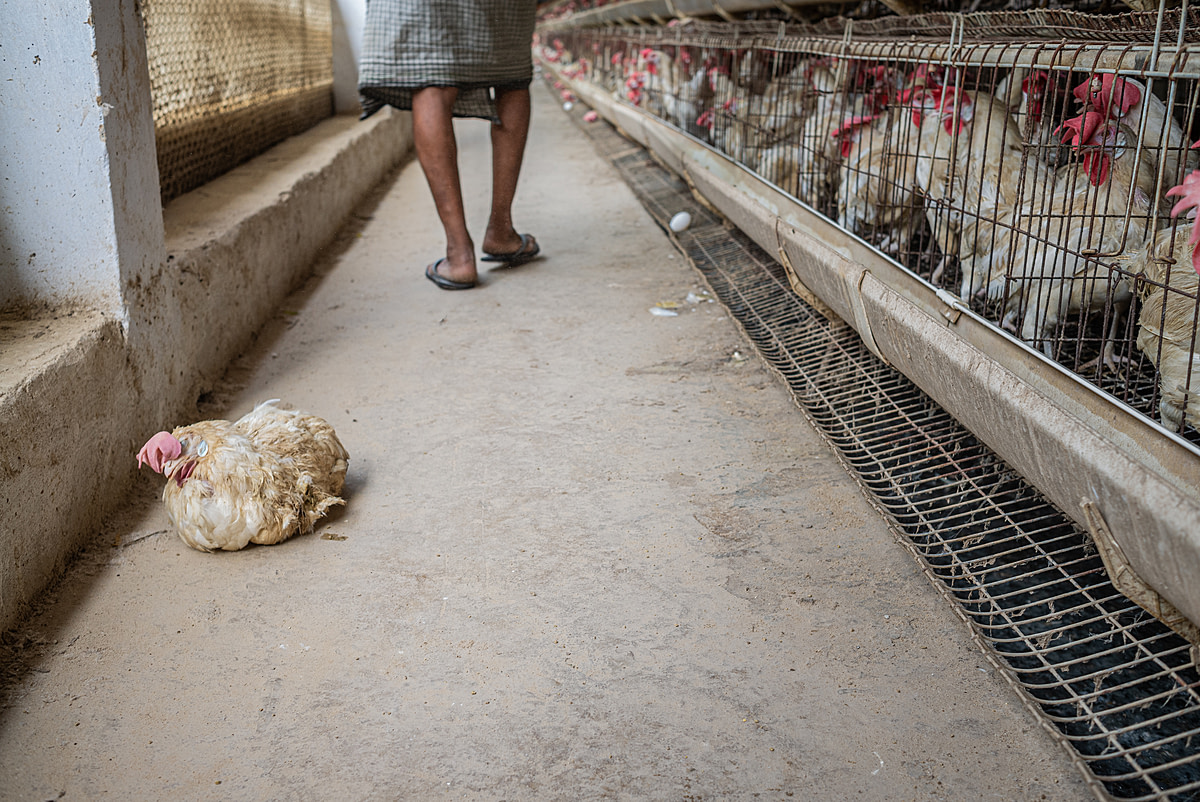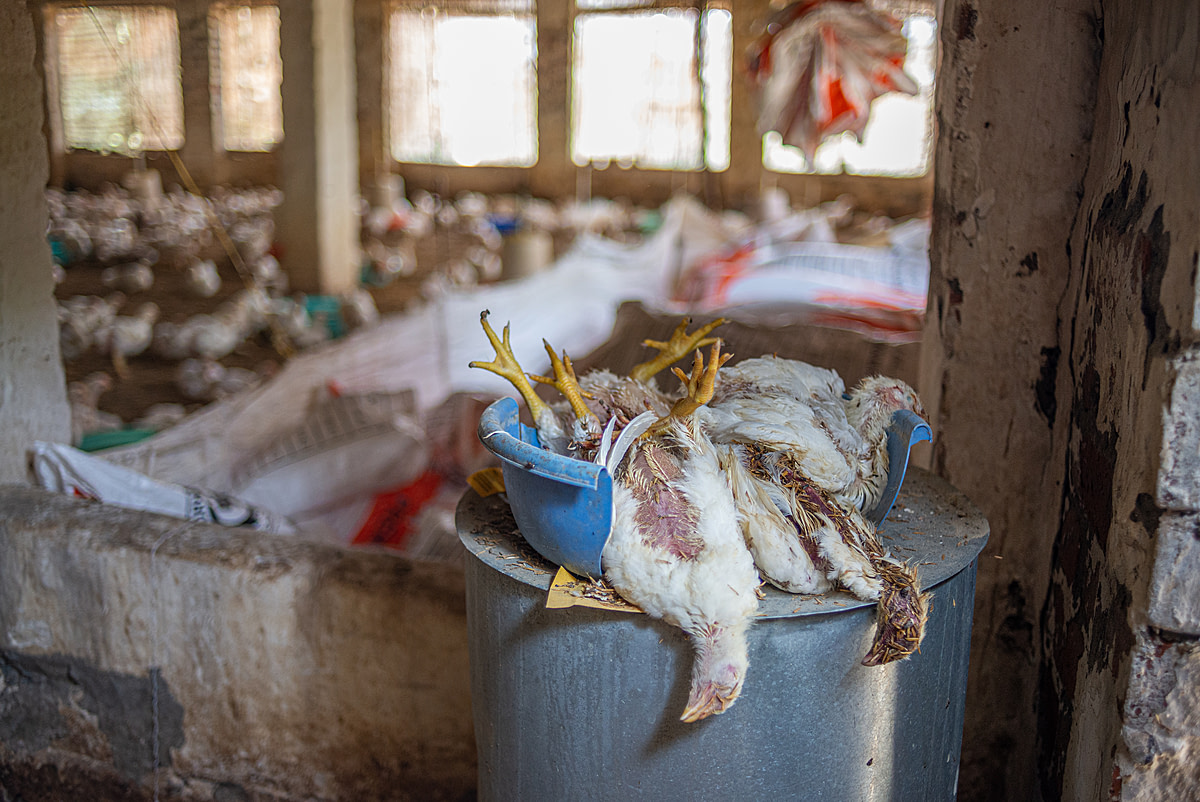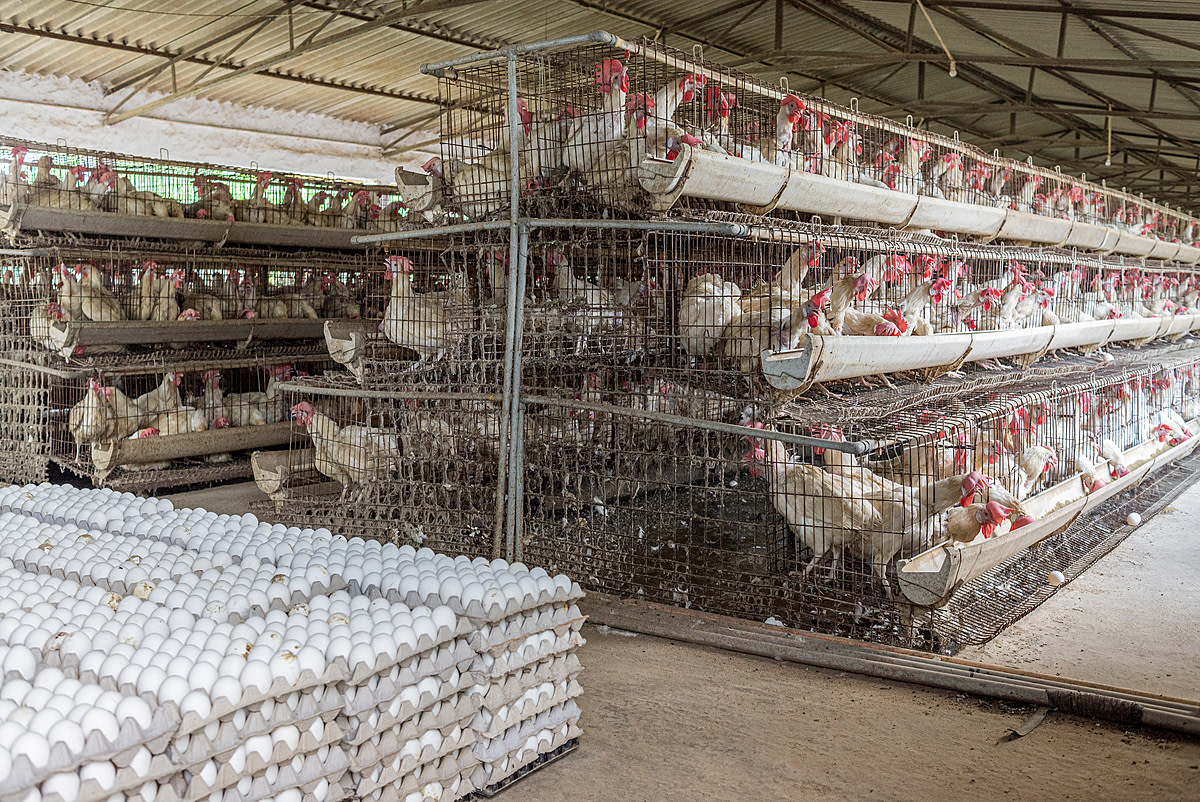Shatabdi Chakrabarti / FIAPO / We Animals
We Animals photojournalist Shatabdi Chakrabarti recently documented conditions inside India’s poultry farms (egg and broiler) during the summer heatwaves, which have been increasing in frequency over the past few years as a result of climate change and shifting weather patterns. Throughout these periods death due to heat exhaustion is a regular occurrence for birds inside farms.
Photographer and Videographer: Shatabdi Chakrabarti
A hen living inside a battery cage on an intensive egg-production farm reaches up to drink from a water dispenser inside the cage she shares with several other hens. She must use her beak to apply pressure to the dispenser to make the water flow. India, 2023.
Shatabdi Chakrabarti / FIAPO / We Animals
Cages have water sprinklers that are pressure activated when a hen pecks on it. Some also have a thin plastic trough placed alongside the outer part of the cages where water is released at particular times of the day. Despite these features, our photojournalist witnessed hens panting constantly and birds lying on the floor with their wings spread wide, desperately trying to cool themselves.
A hen in a battery cage pants in the heat of the day. Rows of stacked battery cages house thousands of hens inside this tin-roofed, open-sided cement shed on an intensive mid-level egg-production farm. Like all birds, hens do not sweat and must pant to cool down when they feel too hot. Though this shed has a ventilation fan at one end of the building, frequent power cuts and outside temperatures reaching 42°C (107°F) cause the hens to jostle for cooler space. India, 2023.
Shatabdi Chakrabarti / FIAPO / We Animals
On egg farms, after 120 days, the now adult hens are shifted into cages of roughly three feet by two feet in size, in groups of up to six, balancing themselves on the thin metal wires of the floors. Our photojournalist noted that many of the hens had missing feathers and visible skin rashes. Their beaks were blunted or chipped off – this is in order to prevent injuries from attacks given their intense confinement. The hens will stay in these cages for 18 to 24 months, after which their egg production declines and they are sold to slaughterhouses.
On broiler farms, the chicks remain in open floor sheds until they reach slaughter weight, which can be as soon as four weeks. These sheds can hold between 8,000 and 15,000 chicks.
Inside a rearing shed on an Indian broiler chicken farm, three to four-week-old chickens crowd around water bowls and feeders. These sheds have tin roofs and open sides covered with wires and porous gunny sacks, often without fans or any other cooling devices. India, 2023.
Shatabdi Chakrabarti / FIAPO / We Animals
“The farm I had gone to had two main sheds – one for the adult egg laying hens and the other shed which only had younger chicks. The adult hens were placed four in a cage while the younger ones were on an open floor set up. When I was shooting in the egg laying shed, the moment I would go close to a cage, the hens would start getting scared and agitated and turn away to the other end of the small cage. There was a visible panic that would set in.
In the shed with the younger chicks, I walked and sat amongst them as there weren’t any cages. The chicks started approaching me and explored my shoes, my camera, my hands, my clothes – pecking lightly or just bobbing their heads around, inspecting me curiously. Some even came hobbling towards me similar to how puppies come running towards a new person. There was so much of an innocent trust and curiosity in them! That was such a stark contrast to how the adult hens were behaving in the cages.” ― Shatabdi Chakrabarti, animal photojournalist
A tin-roofed and open-sided cement shed forms the basic structure for this intensive egg-production farm, where rows of hens live inside tiers of battery cages. The 12,000 hens inside this shed routinely jostle for a cooler space while the outside temperature reaches 42°C (107°F). This shed has only one ventilation fan, no overhead fans and power outages are a regular occurrence. Birds cannot sweat and the hens must pant to cool down. India, 2023.
S. Chakrabarti / We Animals
S. Chakrabarti / We Animals
“The cage became like a symbol for crushing that innocence and trust with which the younger chicks interacted with me. They had no idea that in a few weeks they would also be put in small cages for the next two years just to lay eggs and then sent to slaughterhouses once their yield becomes low.” ― Shatabdi Chakrabarti












India, 2023.
Shatabdi Chakrabarti / FIAPO / We Animals
Photographer and Videographer: Shatabdi Chakrabarti







